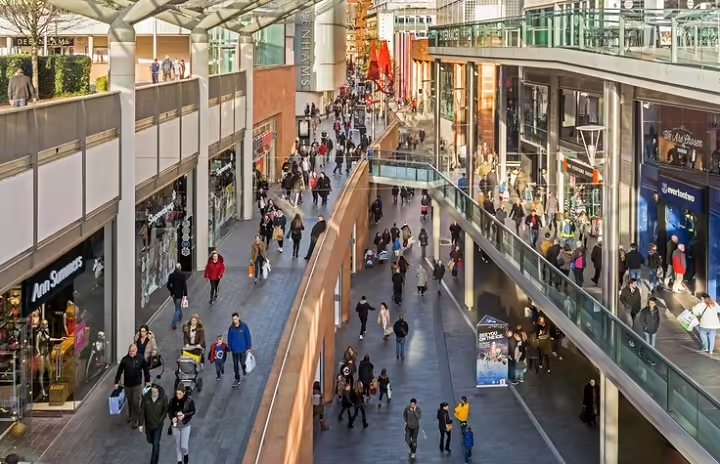Did you enjoy Target Circle Week or Walmart’s July bargains last week? TikTok Shop had its Deals For You Days from July 9-11, and Temu Week, running until July 18, is offering up to 90% off. This week, Amazon Prime Day is here. All these come right after the July Fourth sales, turning the whole month into a whirlwind of bargains. It’s always a good time to shop.
This isn’t by chance. Like when big retailers started lowering grocery prices to fight inflation, it’s basic business strategy to react to competitors. July has become a time for big sales because no store wants to be the one selling an air purifier at full price when Amazon has it at 25% off.
Amazon’s Prime Day is a big deal, showcasing the company’s power. Prime Day, now twice a year, is a shopping event that people look forward to every summer and autumn. It’s still the highlight of the season, with ads featuring stars like Megan Thee Stallion, but other retailers are working hard to get some attention too. A report from eMarketer predicts that for the third year in a row, Amazon’s share of online purchases during Prime Day will decrease, showing that other stores are successfully attracting customers. Prime Day remains a massive 48-hour sales period, but not just for Amazon anymore.
The Rise of Prime Day
The first Prime Day was on July 15, 2015, to celebrate Amazon’s 20th anniversary, claiming to be bigger than Black Friday. It was a smart move to create a new sales event in the middle of summer. Walmart quickly followed with its own July sale that year.
Prime Day also boosted Prime subscriptions. In 2015, 40 million people had signed up for Prime, according to Consumer Intelligence Research Partners (CIRP). Today, CIRP estimates there are about 180 million Prime members in the US, which is over half the country’s population. This loyal customer base helped Amazon, once an unprofitable tech company, become a giant. In the first quarter of 2024, Amazon made a profit of $10.4 billion.
The first Prime Day deals were not as exciting as expected, but Amazon still sold about $900 million worth of goods. Since then, Prime Day sales have grown, reaching $12.7 billion over 48 hours last July.
Sky Canaves, a principal analyst at eMarketer, says Amazon is sticking to its usual Prime Day strategy, offering great deals that drive more Prime sign-ups. This year, some of the best discounts are invite-only for Prime members, like 30% off a Peloton bike and 60% off a Citizen chronograph watch.
You can expect many beauty products on sale too. Amazon has more premium brands this year, especially in beauty, says Neil Saunders from GlobalData. Clinique is now available on Amazon, joining popular brands like Dermalogica and Laneige.
The Never-Ending Sale
Prime Day has created a new shopping event in the lives of American consumers. The problem is that with so many sales in mid-July, the excitement wears off.
Prime Day “used to be bigger,” says Michael Levin, co-founder of CIRP. The thrill has faded because Amazon added a second Prime Day in October and other competitors started copying the Prime Day model. CIRP co-founder Josh Lowitz adds that the excitement has worn off overall.
The slower growth of Prime Day sales may reflect this. Last year’s Prime Day revenue was 6.7% higher than in 2022, but in 2018, revenue jumped by 78% compared to the previous year. Google Trends data shows searches for “Prime Day” peaked in July 2018.
Amazon itself has lessened some of the Prime Day excitement by having more frequent sales, including a major spring event open to all customers and smaller, category-specific sales. Sky Canaves says these additional sales might slightly dampen Prime Day’s impact.
Amazon likely doesn’t mind too much because more sales mean more frequent purchases, whether it’s beauty products or health supplements. At the time of writing, it’s not Prime Day yet, but Amazon already has many “early” Prime Day deals, blurring the start and end of the sale. Even outside big sales, Amazon often has discounts, with prices changing millions of times daily. Tools like Camelcamelcamel or Keepa make it easy to set price drop alerts, so you don’t need to wait for a sale. For example, Levi jeans see an average of six price drops per month, and Premier Protein Shakes drop about 32 times per month. If you miss a deal, just wait a bit.
Competition in the Online Shopping World
Online retailers are competing with their own sales events, and Amazon is noticing. The Information reported that Amazon is launching a cheaper apparel and home goods section with slow shipping from China, similar to how Temu operates.
Amazon is known for convenience, with options for quick delivery. Offering a slow shipping option is sensible but also a nod to the fact that consumers might prioritize price over speed. Chinese e-commerce companies like Temu, which offer low prices, are gaining ground in the US. Whether you shop on Amazon or Temu, your purchase is likely coming from a Chinese seller.
Another advantage for Amazon’s competitors is making shopping fun. “Amazon is great for buying things, but not for discovering new products,” says CIRP’s Lowitz. To find something new on Amazon, you often rely on blogs, Reddit, Wirecutter, and TikTok influencers. Temu and TikTok Shop excel in making shopping more discovery-driven. Amazon has tried to add social shopping features, like a scrolling feed of products and livestream shopping, but these haven’t caught on as much.
Amazon is still the largest e-commerce operation in the US, but it faces challenges from smaller retailers. “The new market entrants like Temu, TikTok Shop, and Shein are impacting sales,” says Canaves.
Over the past few decades, Amazon has become a powerhouse. But maintaining its dominance as the Everything Store is a big challenge now, according to Lowitz. Amazon sells a lot, but can it outperform Shein in fast fashion, Wayfair in furniture, Chewy in pet products, or Walmart in groceries?
One competitor alone might not greatly impact Amazon, but collectively, they do. The evolution of Prime Day is one example — Amazon started it, but now it’s everyone’s Prime Month.


